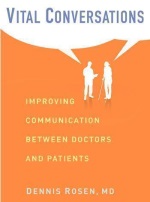Communication tips by Nursing on the Move.
 Are you a professional or a pre-professional?
Are you a professional or a pre-professional?
Do you use a second or foreign language at work?
Do you have a friend who speaks a foreign language at work or has a cultural background different from colleagues/customers?
Improve your first impression by trying the following tips.
When you walk in the room and greet your patients (or colleagues), they form first impressions of you. First impressions are powerful, and can be difficult to change once they are established. Although what you say matters, a large part of first impressions are based on nonverbal behaviour.
 Try to make a positive impression by:
Try to make a positive impression by:
– Smiling;
– Making eye contact;
– Avoiding signs of being in a hurry;
– Avoiding signs of disinterest;
– Avoiding signs of unease like shifting your eyes away from the patient;
– Avoiding signs of arrogance;
– Shaking hands (if customary in your hospital or medical practice);
– Showing enthusiasm and curiosity for the coming encounter in your body language.
People tend to believe the nonverbal message more than the verbal message. Contradictory communication may cause confusion and undermine others’ trust and belief in your sincerity and honesty.
You can find an overview of all communication tips by Communication for Professionals here.
Vital Conversations, Improving Communication Between Doctors and Patients
The health-care system in the United States is by far the most expensive in the world, yet its outcomes are decidedly mediocre in comparison with those of other countries. Poor communication between doctors and patients, Dennis Rosen argues, is at the heart of this disparity, a pervasive problem that damages the well-being of the patient and the integrity of the health-care system and society.
Non-Verbal Communication Between Primary Care Physicians and Older Patients: How Does Race Matter?
by Irena Stepanikova, Qian Zhang, Darryl Wieland, G. Paul Eleazer and Thomas Stewart
„Non-verbal communication is an important aspect of the diagnostic and therapeutic process, especially with older patients. It is unknown how non-verbal communication varies with physician and patient race. The objective of this article is to examine the joint influence of physician race and patient race on non-verbal communication displayed by primary care physicians during medical interviews with patients 65 years or older.“ read this article.

